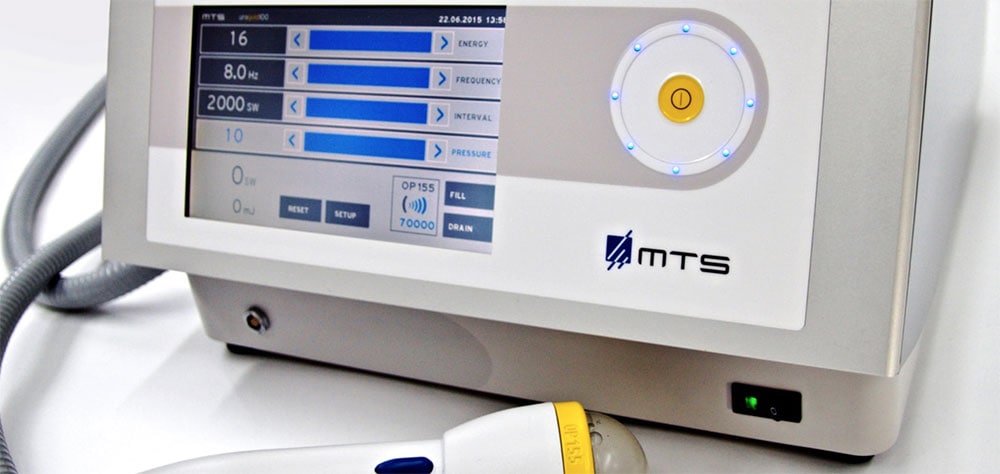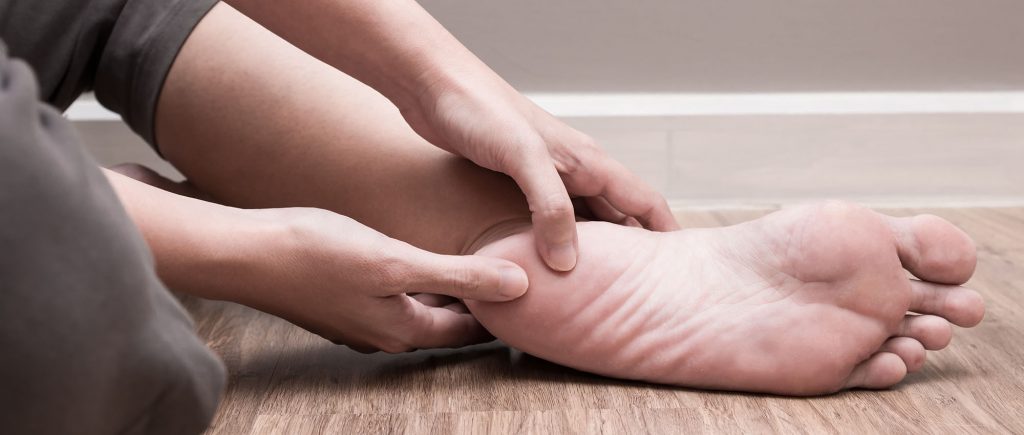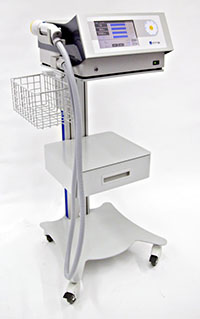Biotechnology has changed how modern podiatry is practiced
The treatment of foot and ankle conditions has dramatically improved in the past decade. The most significant advancements have come from biotechnology that capitalizes on the human body’s capacity to heal damaged and inflamed tissue using natural anti-inflammatory mechanisms, growth factors, and stem cells for tissue regeneration.

A quick recap of the revolutionary regenerative medicine developments since I began my career
In 1999 I was a resident and fellow at UCLA, one of the most progressive podiatric medical schools in the United States. Back then nearly all serious podiatric conditions were treated surgically.
If a patient had tendinopathy symptoms from a thickened or damaged Achilles tendon, surgery was recommended to “clean up” the damaged tendon and improve range of motion. For patients were diagnosed with plantar fasciitis, clinicians administered steroid injections and prescribed physiotherapy. If this non-invasive treatment failed to provide pain relief at the treated area, then surgery was performed to release the plantar fascia.
When I began my career at UCLA, I had a keen interest in learning about holistic approaches to treating foot and ankle conditions. However, at that time, holistic treatment options were limited. I participated in the clinical trials of one of the earliest minimally invasive procedures, known as the Topaz procedure.
The Topaz procedure involved making 20 small puncture wounds through the skin to perforate the underlying tendon or fascia with holes in order to release scar tissue and create minor tissue trauma that would kickstart the body’s natural healing response. This was the first baby step toward a holistic treatment approach.
Later, UFAI was among the first to use high-intensity extracorporeal shock wave therapy (ESWT) to treat plantar fasciitis. During the early days, this treatment was extremely expensive and had to be performed under sedation. At that time, delivering such high-energy shock waves was often quite painful. Despite its effectiveness, ESWT eventually fell out of favor among podiatrists due to the high cost of devices and complexities in delivering treatment.
Searching for the Holy Grail for foot and ankle care
Over the years, I’ve developed what I call my “Holy Grail” list of attributes that a treatment must have to be ideal for healing soft tissue and bone injuries.
- The treatment should be as non-invasive as possible
- It should provide almost immediate relief
- Its healing effects should be long-lasting
- It should be painless (or virtually pain free)
- It should be affordable

Has the Holy Grail arrived for treating plantar fasciitis, achilles tendonitis, heel pain, and other ailments?
I’m glad to report that the Orthogold-100 SoftWave technology is as close to a Holy Grail as I have found after years of seeking a better option for treating plantar fasciitis.
The FDA-approved SoftWave technology combines acoustic waves, light waves, and a burst of energy that delivers the tissue-healing capacity of high-energy extracorporeal shock wave therapy without the pain and difficulty.
SoftWave treatments are virtually pain free, so they don’t require anesthesia and are performed in our office. There’s no downtime and, in fact, most patients report an immediate feeling of improvement that increases in the days and weeks following their treatment.
And the best part: SoftWave treatments don’t cost an arm and a leg. Depending on the treatment being done, costs range from $100 to $300 per session, with three to five sessions usually being sufficient. After the initial treatment, the next treatment is performed within three to seven days, then follow-up treatments are given weekly until the area is better.
Orthogold-100 SoftWave technology can be used to treat:
- Plantar Fasciitis
- Heel pain
- Achilles Tendonitis
- Posterior Tibial Tendonitis
- Peroneal Tendonitis
- Early Arthritis
- Fractures with delayed healing
- Non-healing surgical wounds or bone
- Non-surgical wounds

How does SoftWave Therapy Work?
Essentially, SoftWave therapy works by fooling your body into thinking that it’s been injured. This, in turn, triggers the release of stem cells and “biological responders” to accelerate natural cellular healing mechanisms.
You see, under ordinary circumstances, when you suffer an injury, cells are damaged or die off altogether, causing their membranes to break down. This results in small fragments of cellular RNA being ejected from the broken cells into the surrounding area. When nearby healthy cells detect this influx of RNA, it prompts the activation of natural healing mechanisms such as: a boosted immune response, increased blood flow, and the migration of stem cells to the area.
The brilliance of SoftWave therapy is that it triggers the release of cellular RNA from inflamed, painful tissues without having to further damage them. Instead of tearing the cellular membranes open, the low-energy tensile forces produced by SoftWave make the cell membranes temporarily permeable while keeping them intact. This allows the RNA fragments to exit the cell and “call for help” without having to sacrifice the host cell. All of which speeds up the healing process. Pretty cool, huh?
What results can I expect from SoftWave Therapy?
I can personally vouch for SoftWave therapy as I have used it myself. Three treatments over the span of ten days completely calmed down my plantar fasciitis pain. Three treatments reduced the inflammation in my Achilles after playing way too much tennis over a weekend.
We’ve seen similar results for almost every patient who has used the device. In just a few sessions, they got substantial healing and a reduction of chronic pain.
Benefits of SoftWave Therapy
- It is completely non-invasive and requires no needles or anesthesia.
- Treatment is painless and does not cause any trauma to the body.
- SoftWave is often effective as an alternative to surgery, achieving full healing when all other conservative treatments have failed.
- There are no known side effects or downtime. You can walk right out the door after treatment.
- You don’t need to set foot in a hospital or deal with any of the delays, expenses, and frustration associated with inpatient care.
- It can resolve most soft tissue injuries and pain in just a few sessions, as well as dramatically reduce recovery time after surgery. SoftWave therapy has shown to increase blood vessel coverage (neovascularization) in injured areas by up to 400%.
- It works quickly, and the results are long lasting.
- When used for wound therapy, pain and swelling are eased substantially, and the immune system is able to fight infections much more quickly.
The University Foot and Ankle Institute has spent years helping develop SoftWave for use for podiatry conditions. We are proud to be one of the first foot and ankle centers in the United States to adapt the SoftWave machine to foot and ankle needs.
Our SoftWave promise and guarantee
We are so confident in our SoftWave technology and our protocol at University Foot and Ankle Institute that we offer a guarantee: sign up for 5 sessions of SoftWave to treat your heel pain, plantar fasciitis, and/or Achilles tendonitis, and if you don’t have complete resolution of your pain, we will perform a free platelet-rich plasma (PRP) therapy for you.
We know we can make you better and get you back to your life, and we will put our reputation and our money on the line. We’re that confident in this technology.
Why choose University Foot and Ankle Institute for your foot care?
If you’re experiencing foot pain or other foot problems, we’re here to help. Our nationally recognized foot and ankle doctors offer the most advanced foot care and the highest success rates in the nation. We are leaders in the research and treatment of all foot and ankle conditions.
At University Foot and Ankle Institute, we take our patients’ safety seriously. Our facility’s Covid-19 patient safety procedures exceed all CDC recommendations. Masks are required in our institutes at all times.
For more information or to schedule a consultation in the greater Los Angeles area, please call (877) 736-6001 or make an appointment now.
University Foot and Ankle Institute is conveniently located throughout Southern California and the Los Angeles area as our foot doctors are available at locations in or near Santa Monica (on Wilshire Blvd.), Beverly Hills, West Los Angeles, Manhattan Beach, Northridge, Downtown Los Angeles, Westlake Village, Granada Hills, and Valencia California, to name a few.
- The Power of Pediatric Flexible Flatfoot Procedures - September 21, 2023
- StimRouter: A Revolutionary Approach to Targeted Pain Relief - August 21, 2023
- Is Cosmetic Foot Surgery Safe? Or Are You Starting Off on the Wrong Foot? - May 17, 2023
Leave a Reply